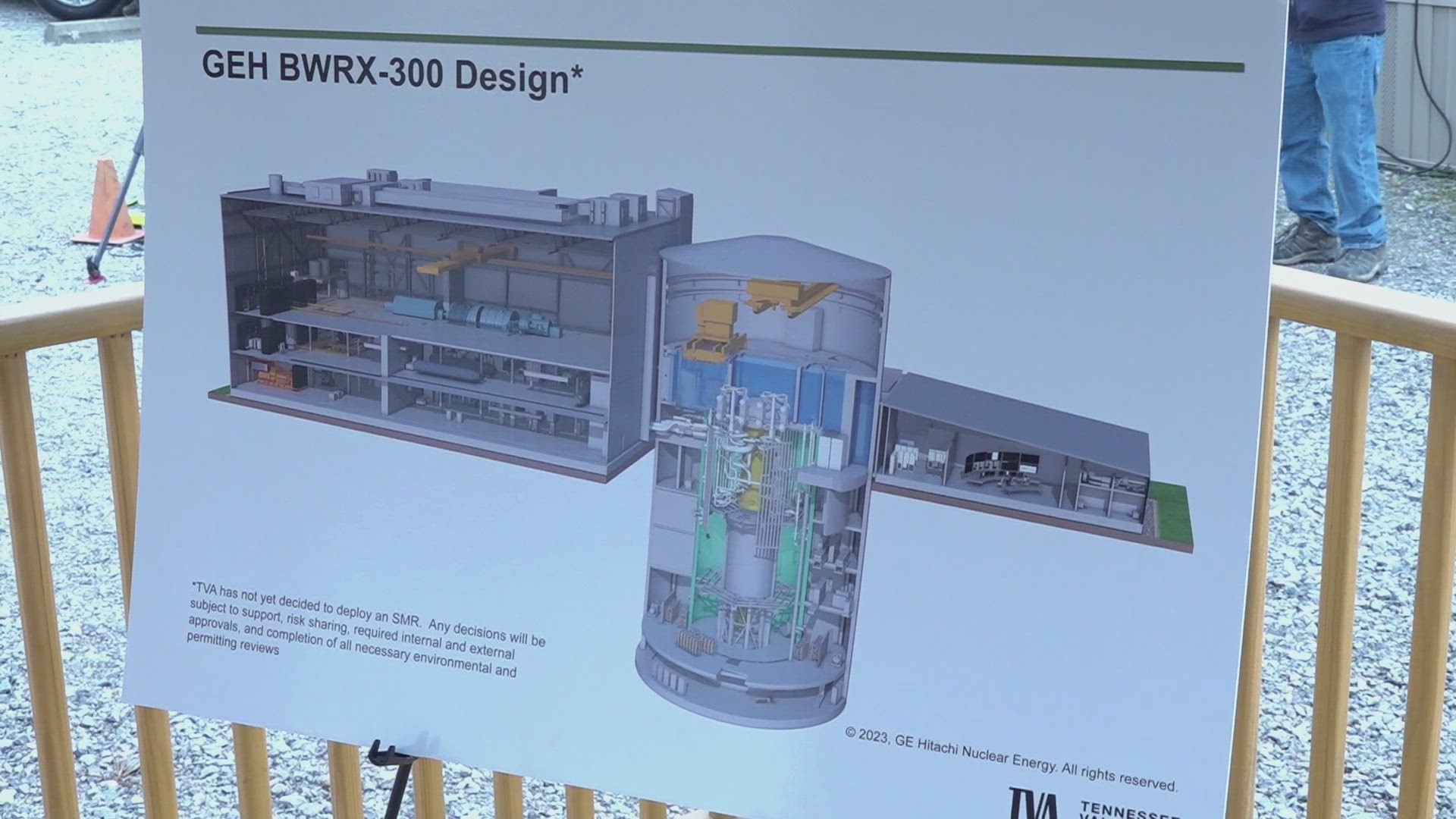KNOXVILLE, Tenn. — The U.S. Secretary of Energy Jennifer Granholm visited the Tennessee Valley Authority on Tuesday.
Granholm went to the Clinch River Nuclear Site where TVA officials walked her through the first small modular reactor, a nuclear reactor that produces carbon-free power.
Granholm said there are big demands—both in the United States and abroad for new-scale technology.
"We want to provide clean power at home and that's what nuclear power gets to a community, reliable power, jobs, economy," Granholm said. "The sizing is important, the flexibilities important the fact that they can be matched, and they don't even have to be 300 megawatts, you can get down to 100 megawatts."
TVA President Jeff Lyash said over the next 20 or 30 years people are going to depend more on electricity as an energy source.
Lyash said TVA has been committed to three things: Energy, the environment and economic development. To meet those objectives, the new nuclear power needs to include solar, storage and energy efficiency, according to TVA.
"In this country, we use 14 times as much electricity as we did 50 years ago, 14 times," Lyash said. "And by 2050, it's likely to be half of the energy you need. So we're going to double the size of this system."
Lyash said they hope Oak Ridge will be the home of a first-of-a-kind, small modular reactor development. With this move, it could set the standard, prove the technology and demonstrate the ability to others.
They've been about five years into this project. They've delivered an early site permit and have partnerships in Canada, Poland and Japan.
TVA is also developing a license application with the U.S. Nuclear Regulatory Commission and working with partners to put together the delivery model in the supply chain.
Their goal is to move forward on this construction site in 2027. They want to construct the first small modular reactor to have it in service in the early 2030s.
"The challenge is building the first of a kind, really understand what the cost and the schedule and the risk is, learn the lessons on the first unit here, and be able to rapidly take those lessons learned and incorporate them in the design of units, two, three and four on this site," Lyash said. "And importantly, others can use TVA as experience in order to be able to do that across the nation, and the nation to be able to use that as an export technology to help the rest of the world decarbonize."
The United States has a goal of getting to net zero by 2050 and carbon-free power by 2035. But it's unlikely to meet those goals and triple nuclear power over the next few decades without small modular reactors.
The U.S. is going to need 200 gigawatts of nuclear power to meet that goal, and the example she gave was the Hoover Dam which has two gigawatts of power. So, in theory, the U.S. has to build 100 Hoover Dams to possibly be able to meet those goals.
For clean energy technology, they project a $23 trillion global market by 2030 and if it's made in America—it can also be exported elsewhere.
"We are certainly supportive of this project, and we'll be in continuous discussions I know with TVA about how we can be of further assistance," Granholm said. "So jobs, the economy, and obviously, once you get to reliable, low cost, baseload power, your prices come down to and you have energy security."

